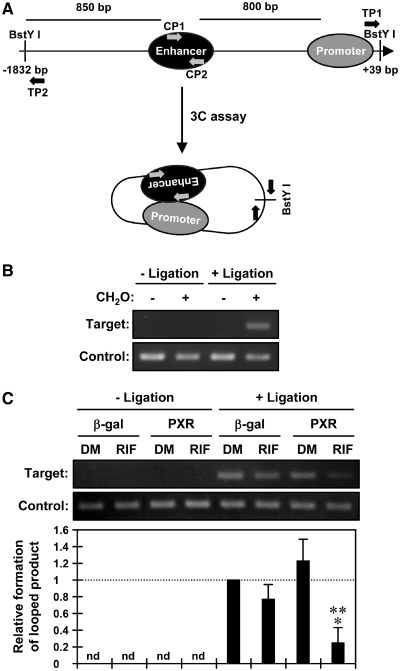Figure 5.
PXR disrupts the enhancer-proximal promoter loop of the SULT1E1 gene. (A) A schematic representation of the 3 C assay of the SULT1E1 gene. Numbers indicates positions relative to the transcriptional start site; arrows indicate positions of PCR primers. (B) After cross-linking by CH2O treatment, nuclei were prepared from Huh7 cells and subjected to 3 C assays as described in ‘Experimental Procedures’ section. From purified DNAs, formation of the 3C ligated product was detected by PCR amplification using TP1 and TP2 primers. Control product was also amplified using CP1 and CP2 primers to verify the quantity and quality of the DNA. (C) Huh7 cells were infected with adeno-β-gal or adeno-hPXR for 30 h, treated with RIF or DMSO (DM) for another 6 h in FBS-free MEM and then subjected to 3 C assays as described in ‘Experimental Procedures’ section. From purified DNAs, formation of the 3 C ligated product was determined by real-time PCR. Values were normalized by amplification of control product and expressed by taking those levels in cells infected with adeno-β-gal as one. Bars represent the mean ± SD. *P < 0.05 (β-gal + RIF versus PXR + RIF); **P < 0.05 (PXR + DMSO versus PXR + RIF).

